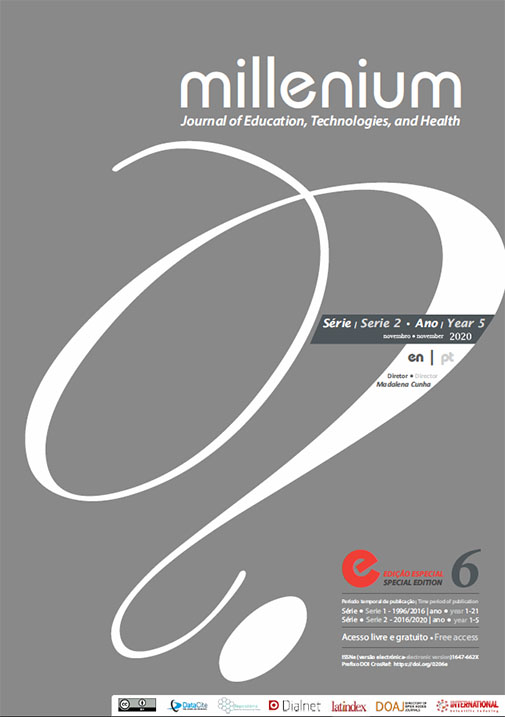Life cycle assessment
historical review and future perspective
DOI:
https://doi.org/10.29352/mill0206e.06.00315Keywords:
life cycle assessment, life cycle analysis, environment, resources, energyAbstract
Introduction: This article presents a historical review and future perspective of life cycle assessment (LCA), as a tool for environmental assessment of products.
The first LCA studies, called REPA (Resource and Environmental Profile Analysis), were carried out in the United States of America (USA) in the early 70s of the last century and had as main motivation the aspects related to the environmental implications and the consumption of resources used in the packaging production. It was not until the mid-1980s that these studies began to be carried out in Europe through the Swiss Federal Laboratory for Testing and Investigating Materials (EMPA).
Development: In the 90's there was a notable growth in LCA activities in Europe and the USA, namely in terms of harmonization of LCA methods and standardization activities carried out, respectively, by SETAC (Society of Environmental Toxicology and Chemistry) and ISO (International Organization for Standardization).
As of the year 2000, countless international and regional organizations were created, with the objective of improving the credibility; acceptance and practice of LCA, as well as many computer tools (software and databases) were developed to support LCA studies.
Conclusions: One of the main future challenges for LCA is its greater integration with other life cycle approaches, which have been emerged, as LCA studies have been increasingly well developed.
Downloads
References
Ahbe, S., Braunschweig, A., Müller-Wenk, R. (1991). Methodologie des Ecobilans sur la base de l’optimisation écologique. Em l’Office fédéral de l’environnement, des forêts et du paysage (OFEFP) (Eds.). Cahier de l’environement, 133. Berne.
Bare J, Norris G, Pennington D, McKone T (2003). TRACI – The Tool for the Reduction and Assessment of Chemical and other environmental Impacts. Journal of Industrial Ecology, 6(3), 49-78.
Estevan, H. and Schaefer, B. (2017). Life Cycle Costing State of the art report. SPP Regions (Sustainable Public Procurement Regions) Project Consortium. ICLEI – Local Governments for Sustainability, European Secretariat.
EC (2016). European Platform on Life Cycle Assessment. European Commission Environment. Accessed in: http://ec.europa.eu/ environment/ipp/lca.htm.
Fink, P. (1997). The Roots of LCA in Switzerland: Continuous Learning by Doing. Int. J. LCA, vol. 2 (3) 131-134. Landsberg, Germany: Ecomed.
Gabathuler, H. (1997). The CML Story: How Environmental Sciences Entered the Debate on LCA. Int. J. LCA, vol. 2 (4) 187-194. Landsberg, Germany: Ecomed.
Guinée, J. (1995). Development of a Methodology for the Environmental Life-Cycle Assessment of Products (with a case study on margarines). Ph. D. thesis. Leiden University, Leiden.
Heijungs, R. and Guinée, J. (2012). An Overview of the Life Cycle Assessment Method—Past, Present, and Future. In: Curran, M.A. (Ed.), Life Cycle Assessment Handbook: A Guide for Environmentally Sustainable Products, pp. 15–42. Beverly: Scrivener Publishing.
Hindle, P. and Oude, N. (1996). SPOLD - Society for the Promotion of Life Cycle Development. Int. J. LCA 1 (1) 55-56. ecomed publishers, D-86899 Landsberg, Germany.
Hollerud and Bowyer, J. (2017). A Review of Life Cycle Assessment Tools. Dovetail Partners. Accessed in: http://www.dovetailinc.org/dovetaillcatools 0217.pdf
Hunt, R. and Franklin, E. (1996). LCA - How it Came About. Personal Reflections on the Origin and the Development of LCA in the USA. Int. J. LCA, vol. 1 (1) 4-7. Landsberg, Germany: Ecomed.
OFEFP (1984). Bilan Écologique des Matériaux D'emballage. Office Fédéral de L'environnment, des Forêts et du Paysage. Cahiers de l'environnment, 24. Berne.
Reed, D. (2012). Life-Cycle Assessment in Government Policy in the United States. PhD diss., University of Tennessee. Accessed in: https://trace.tennessee. edu/utk_graddiss/1394
Sala, S., Vasta, A., Mancini, L., Dewulf, J., Rosenbaum, E. (2015). Social Life Cycle Assessment - State of the art and challenges for supporting product policies; EUR 27624 EN; doi:10.2788/253715
SETAC (1991). A Technical Framework for Life-Cycle Assessment. Em Fava, J., Denison, R., Jones, B., Curran, M., Vigon, B., Selke, S. e Barnum, J. (Eds.). Workshop report from the Smugglers Notch. Society of Environmental Toxicology and Chemistry, Vermont, USA.
SETAC (1993). Guidelines for Life-Cycle Assessment: A “Code of Practice”. Em Consoli, F., Allen, D., Boustead, I., Fava, J., Franklin, W., Jensen, A., Oude, N., Parrish, R., Perriman, R., Postlethwaite, D., Quay, B., Séguin, J., e Vigon B. (Eds.). Society of Environmental Toxicology and Chemistry, Sesimbra: Portugal.
Tibor, T. and Feldman, I. (1996). ISO 14000: A Guide to the New Environmental Management Standards. USA: Times Mirror Higher Education Group.
UNEP/SETAC (2009). Guidelines for Social Life Cycle Assessment of Products, UNEP/SETAC Life Cycle Initiative, Paris. Accessed in: www.unep.fr/shared/ publications/pdf/ DTIx1164xPA-guidelines_sLCA.pdf.
UNEP/SETAC (2011). Towards a Life Cycle Sustainability Assessment: Making informed choices on products, UNEP/SETAC Life Cycle Initiative, Paris. Accessed in: https://www.lifecycleinitiative.org/wp-content/ uploads/ 2012/12/2011%20-%20Towards%20LCSA.pdf
UNEP/SETAC (2012). Greening the Economy Through Life Cycle Thinking, UNEP/SETAC Life Cycle Initiative, Paris. Accessed in: https://www.lifecycleinitiative. org/wpcontent/uploads/2013/03/2012LCI_10_years_28 .3.13.pdf
UNEP/SETAC (2015). Vibrant Communities and Sustainable Value Chains. A Life Cycle Management Capability Framework for Business. UNEP/SETAC Life Cycle Initiative, Paris. Accessed in: https://www.lifecycleinitiative.org/wp-content/uploads/2015/11/LCM-CMM-Workbook-24.10.2015.pdf
Downloads
Published
How to Cite
Issue
Section
License
Authors who submit proposals for this journal agree to the following terms:
a) Articles are published under the Licença Creative Commons (CC BY 4.0), in full open-access, without any cost or fees of any kind to the author or the reader;
b) The authors retain copyright and grant the journal right of first publication, allowing the free sharing of work, provided it is correctly attributed the authorship and initial publication in this journal;
c) The authors are permitted to take on additional contracts separately for non-exclusive distribution of the version of the work published in this journal (eg, post it to an institutional repository or as a book), with an acknowledgment of its initial publication in this journal;
d) Authors are permitted and encouraged to publish and distribute their work online (eg, in institutional repositories or on their website) as it can lead to productive exchanges, as well as increase the impact and citation of published work
Documents required for submission
Article template (Editable format)





